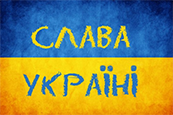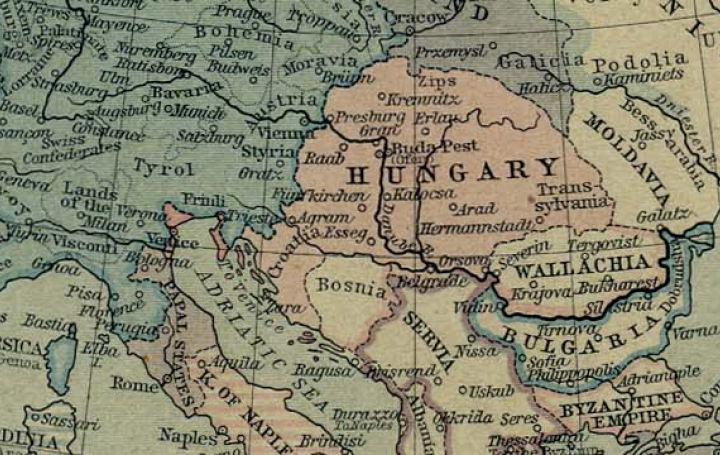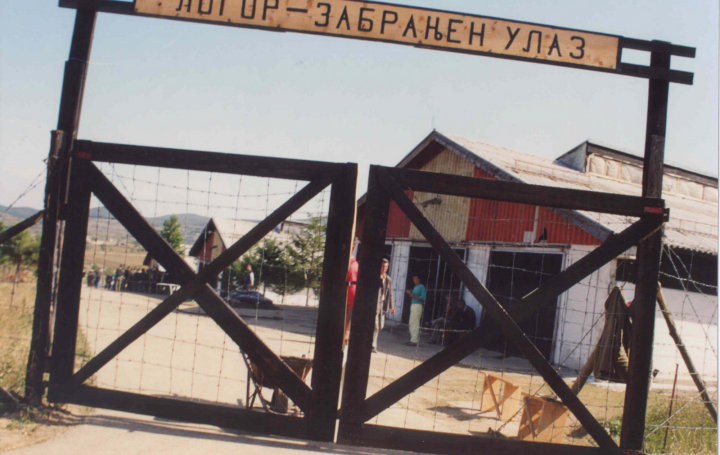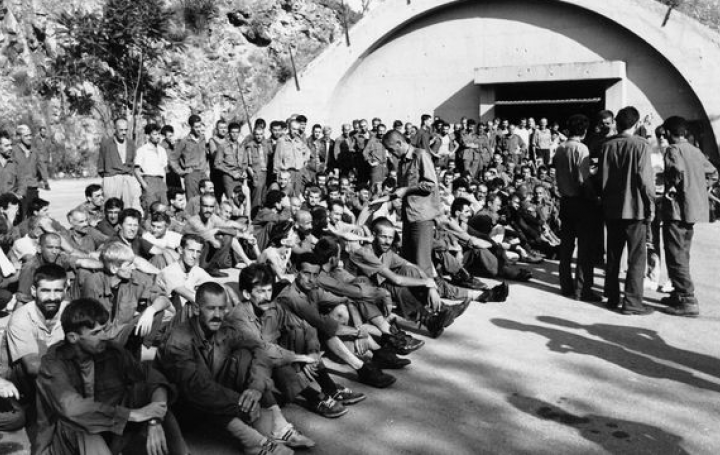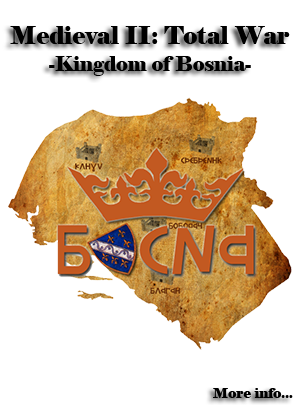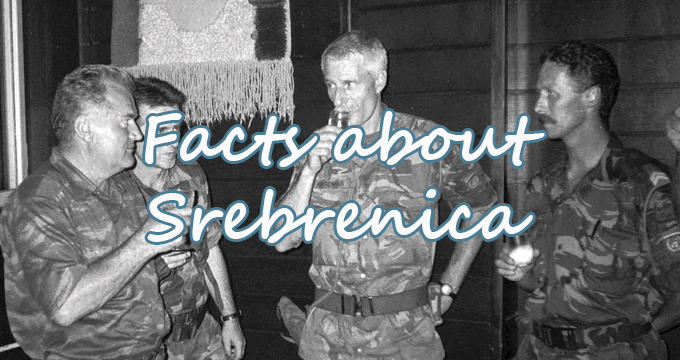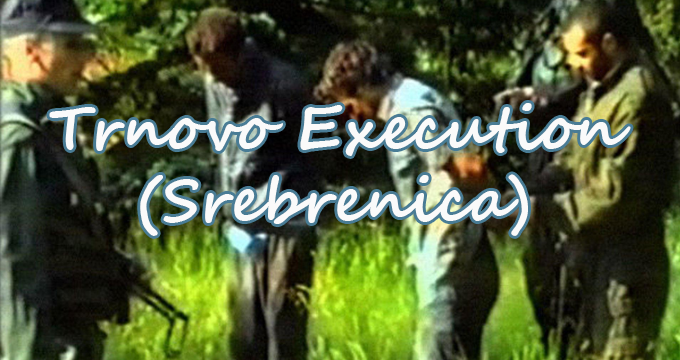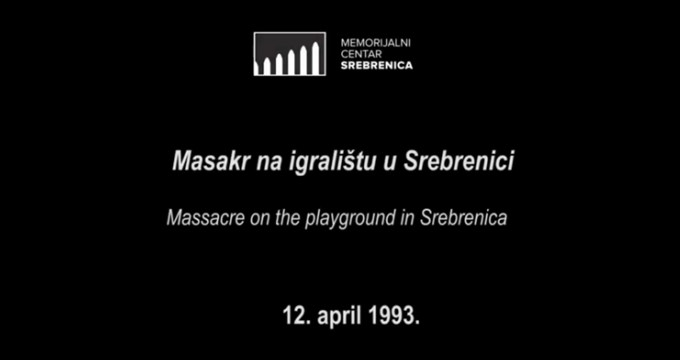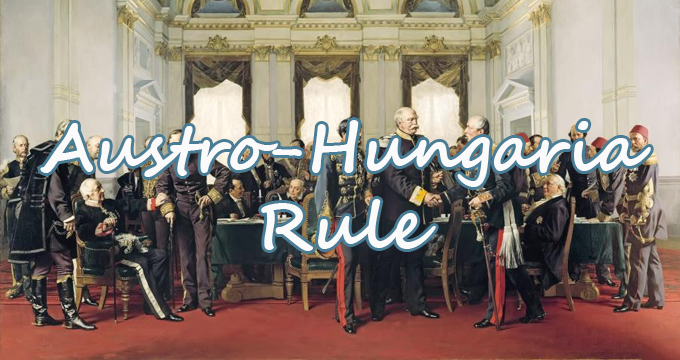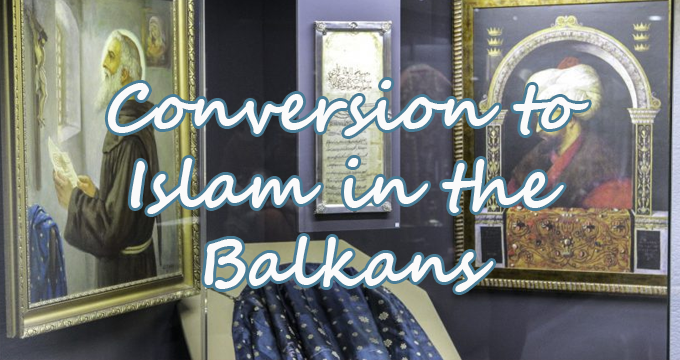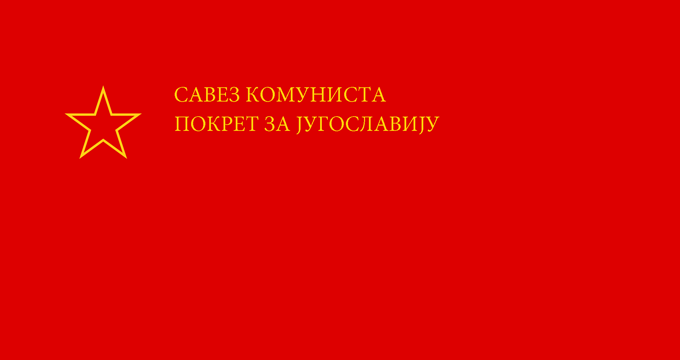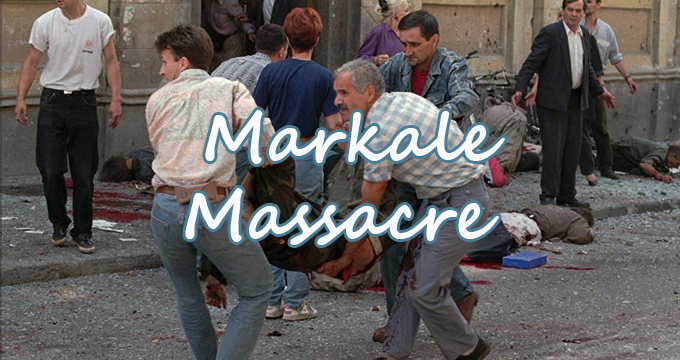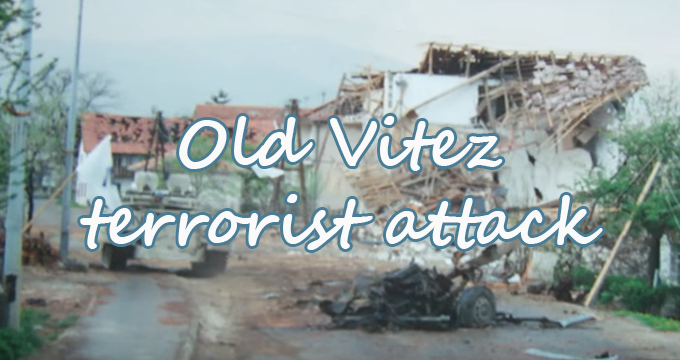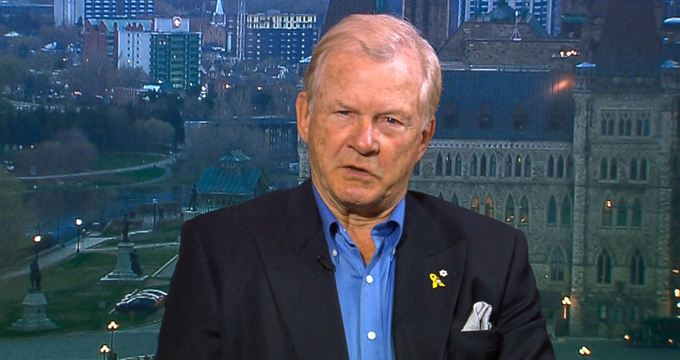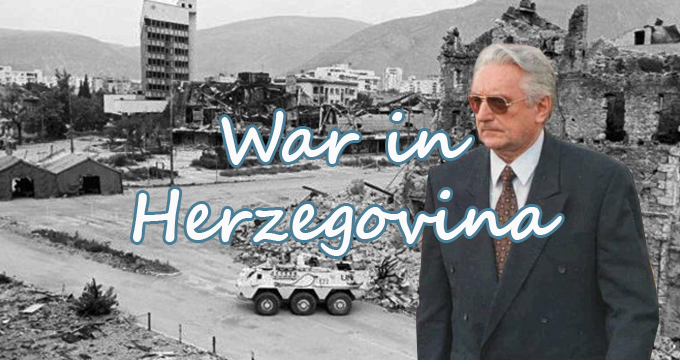The Croatian Community of Herzeg-Bosnia took control of many municipal governments and services in Herzegovina as well, removing or marginalising local Bosniak leaders. Herzeg-Bosnia took control of the media and imposed Croatian ideas and propaganda. Croatian symbols and currency were introduced, and Croatian curricula and the Croatian language were introduced in schools. Many Bosniaks and Serbs were removed from positions in government and private business; humanitarian aid was managed and distributed to the Bosniaks' and Serbs' disadvantage; and Bosniaks in general were increasingly harassed. Many of them were deported into concentration camps: Heliodrom, Dretelj, Gabela, Vojno and Šunje.
Up till 1993 the Croatian Defence Council (HVO) and Army of Republic of Bosnia and Herzegovina (ARBiH) had been fighting side by side against the superior forces of the Army of Republika Srpska (VRS) in some areas of Bosnia and Herzegovina. Even though armed confrontation and events like the Totic kidnappings strained the relationship between the HVO and ARBiH the Croat-Bosniak alliance held in Bihac pocket (northwest Bosnia) and the Bosanska Posavina (north), where both were heavily outmatched by Serb forces.
According to ICTY judgment in Naletilić-Martinović case Croat forces attacked the villages of Sovici and Doljani, about 50 kilometers north of Mostar in the morning on April 17, 1993. The attack was part of a larger HVO offensive aimed at taking Jablanica, the main Bosnian Muslim dominated town in the area. The HVO commanders had calculated that they needed two days to take Jablanica. The location of Sovici was of strategic significance for the HVO as it was on the way to Jablanica. For the Bosnian Army it was a gateway to the plateau of Risovac, which could create conditions for further progression towards the Adriatic coast. The larger HVO offensive on Jablanica had already started on April 15, 1993. The artillery destroyed the upper part of Sovici. The Bosnian Army was fighting back, but at about five p.m. the Bosnian Army commander in Sovici, surrendered. Approximately 70 to 75 soldiers surrendered. In total, at least 400 Bosnian Muslim civilians were detained. The HVO advance towards Jablanica was halted after a cease-fire agreement had been negotiated. [61]
References:
1. ICTY (Naletilic-Matinovic): 1. Sovici and Doljani- the attack on 17 April 1993 and the following days [61]

